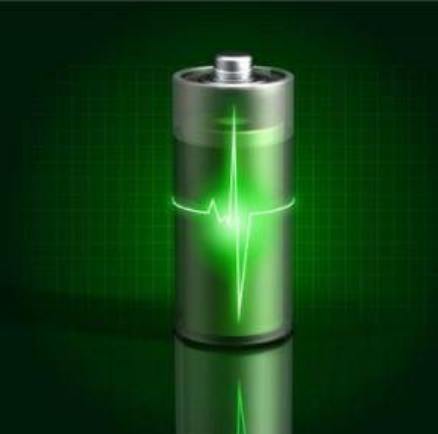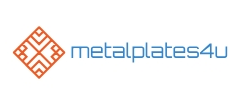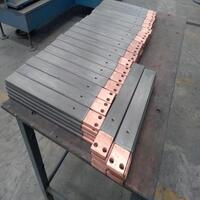1. Introduction
Ever seen a sleek modern building with a rust-like finish or a shimmering copper roof that ages gracefully? Chances are, you’re looking at a metal clad structure. The term ‘metal clad’ might sound technical, but it’s actually everywhere—from your home’s siding to industrial piping and even electrical wiring. In simple terms, metal clad refers to a composite material where one metal is bonded to another to combine their best properties. Whether it’s durability, corrosion resistance, aesthetics, or conductivity, metal clad solutions offer smart, versatile answers across countless applications.

2. What Does Metal Clad Mean?
The metal clad meaning—or clad metal meaning—revolves around layered metals. Clad metals are engineered by bonding two or more different metals together, typically through rolling, explosion bonding, or electroplating. This process creates a hybrid material that retains the structural strength of a base metal (like steel) while gaining surface benefits from a cladding metal (like stainless steel, copper, or titanium). For example, aluminum clad stainless steel offers the lightness of aluminum with the corrosion resistance of stainless steel.
3. Common Types of Metal Clad Materials
3.1. Steel-Based Clad Metals

Clad steel is one of the most widely used forms. It often features a carbon steel core with a stainless steel, nickel, or copper cladding. Stainless clad aluminum and aluminum clad steel are also popular in aerospace and automotive sectors. Titanium clad and copper nickel clad variants are used in harsh environments like chemical processing or marine applications.
3.2. Architectural Cladding Metals
In construction, metal clad wall systems and facades dominate modern design. Popular choices include corten steel facade, zinc facade, copper siding, and corrugated steel facade. These materials not only look striking but also age beautifully with minimal maintenance. A metal clad house might feature vertical standing seam metal siding, colorbond standing seam panels, or even a zinc clad dormer for added character.
4. Architectural Applications of Metal Clad

4.1. Metal Clad Roofs and Walls
Metal clad roofs—like pac clad standing seam roof systems—are prized for longevity and weather resistance. Options range from zinc clad roof to exterior corrugated metal siding. Similarly, metal clad siding can be installed vertically or horizontally, offering both function and flair. Products like pac clad coping and pac clad column covers enhance both aesthetics and protection on commercial buildings.
4.2. Facades and Design Elements
Designers love metal facade systems for their versatility. A corten steel siding cost might be higher upfront, but its self-protecting rust layer eliminates the need for painting. Zinc metal siding and stainless steel metal plate accents add elegance, while standing seam facade panels provide clean, uninterrupted lines. Even steel weatherboard and metal weatherboard styles mimic traditional wood but with superior durability.
5. Industrial and Technical Uses
5.1. Metal Clad Wiring and Electrical Systems
Metal clad electrical wire—often called MC cable—is armored for safety in commercial and industrial settings. Aluminum clad wire, copper clad wire (cu clad wire), and aluminum clad steel wire are common variants. These cables are fire-resistant and mechanically robust, making them ideal for surface-mounted or outdoor installations where protection is critical.
5.2. Piping, Insulation, and Structural Components
Aluminum clad pipe insulation is standard in HVAC and industrial piping to prevent heat loss and condensation. Meanwhile, metal clad insulation wraps protect against temperature extremes. In structural contexts, thick steel plate, mild steel plate, or corten steel plate may be used as base materials, often enhanced with cladding for corrosion resistance.
6. Popular Metal Plates and Sheets in Clad Systems
Beyond cladding, many metal plate types serve as substrates or finishes. Stainless steel plate grades like 316L or 304L are common, as are alloy plates such as 6061 T6 aluminum plate or 7075 T6 clad. Diamond plate steel, checker plate metal sheet, and aluminum tread plate offer slip resistance for flooring and ramps. Specialty finishes like chromium electroplating, electroless nickel, or gold coating add functional or decorative value.
7. Cost and Availability Considerations
While corten siding cost and corten steel siding cost can be higher than vinyl or wood, the lifecycle value often justifies the investment. Similarly, stainless steel plate price or aluminum sheet for sale varies by grade and thickness—common sizes include 1/8 inch steel plate, 3/16 metal plate, or 3mm aluminium checker plate. Buyers often search for ‘steel plate near me’ or ‘aluminium checker plate near me’ for local sourcing.
8. Conclusion
Metal clad isn’t just a buzzword—it’s a smart engineering and design strategy that merges performance with aesthetics. From a steel clad building downtown to the aluminum clad stainless steel in your kitchen cookware, clad metals quietly power modern life. Whether you’re choosing a metal clad roof for your home, specifying pac clad hwp for a commercial project, or selecting clad wire for an electrical job, understanding the options ensures you get durability, efficiency, and style in one package.
Our Website founded on October 17, 2012, is a high-tech enterprise committed to the research and development, production, processing, sales and technical services of ceramic relative materials such as Understand. Our products includes but not limited to Boron Carbide Ceramic Products, Boron Nitride Ceramic Products, Silicon Carbide Ceramic Products, Silicon Nitride Ceramic Products, Zirconium Dioxide Ceramic Products, etc. If you are interested, please feel free to contact us.
